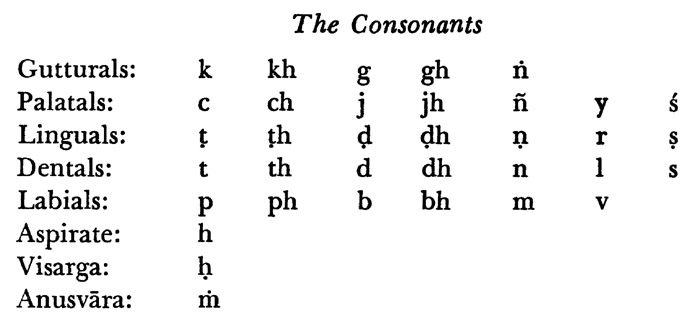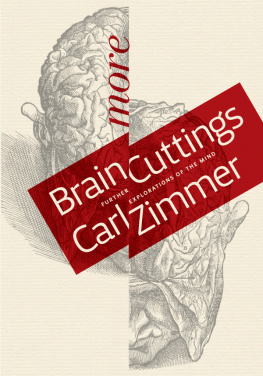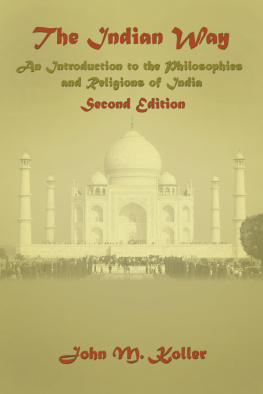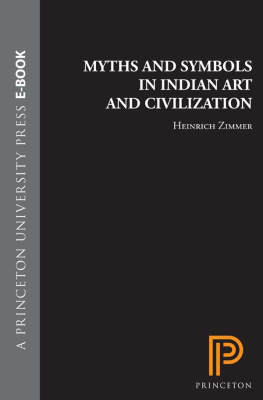Zimmer - Philosophies of India
Here you can read online Zimmer - Philosophies of India full text of the book (entire story) in english for free. Download pdf and epub, get meaning, cover and reviews about this ebook. publisher: Taylor & Francis (CAM), genre: Religion. Description of the work, (preface) as well as reviews are available. Best literature library LitArk.com created for fans of good reading and offers a wide selection of genres:
Romance novel
Science fiction
Adventure
Detective
Science
History
Home and family
Prose
Art
Politics
Computer
Non-fiction
Religion
Business
Children
Humor
Choose a favorite category and find really read worthwhile books. Enjoy immersion in the world of imagination, feel the emotions of the characters or learn something new for yourself, make an fascinating discovery.
Philosophies of India: summary, description and annotation
We offer to read an annotation, description, summary or preface (depends on what the author of the book "Philosophies of India" wrote himself). If you haven't found the necessary information about the book — write in the comments, we will try to find it.
Philosophies of India — read online for free the complete book (whole text) full work
Below is the text of the book, divided by pages. System saving the place of the last page read, allows you to conveniently read the book "Philosophies of India" online for free, without having to search again every time where you left off. Put a bookmark, and you can go to the page where you finished reading at any time.
Font size:
Interval:
Bookmark:

First published in 1951
This edition first published in 2008 by
Routledge
2 Park Square, Milton Park, Abingdon, Oxon, OX14 4RN
Simultaneously published in the USA and Canada
by Routledge
270 Madison Ave, New York NY 10016
Routledge is an imprint of the Taylor & Francis Group, an informa business
Transferred to Digital Printing 2009
1951 Routledge
All rights reserved. No part of this book may be reprinted or reproduced or utilised in any form or by any electronic, mechanical, or other means, now known or hereafter invented, including photocopying and recording, or in any information storage or retrieval system, without permission in writing from the publishers.
British Library Cataloguing in Publication Data
A catalogue record for this book is available from the British Library
Library of Congress Cataloging in Publication Data
A catalog record for this book has been requested
ISBN 10: 0-415-44291-5 (Set)
ISBN 13: 978-0-415-44291-6 (Set)
ISBN 10: 0-415-46232-0 (Volume 20)
ISBN 13: 978-0-415-46232-7 (Volume 20)
Publishers Note
The publisher has gone to great lengths to ensure the quality of this reprint but points out that some imperfections in the original copies may be apparent.
3. Valor against Time
III. BRHMANISM
(Persian), from a manuscript of Firdauss Shh-nmah, dated 1602 A.D. (Courtesy of The Metropolitan Museum of Art, New York.)
X. Gautama Buddha, from the Jamlpur (jail) mound, Mathur. Red sandstone, 7 ft. 2 in. Gupta, 5th century A.D. (Mathur Museum. Photo: Johnston and Hoffman, Calcutta.)
Dr. Heinrich Zimmers posthumous chapters for a projected volume on the philosophies of India were found in various stages of completion. Those on the meeting of the Orient and Occident, the Indian philosophy of politics, Jainism, Skhya and Yoga, Vednta, and Buddhahood had served as notes for a course of lectures delivered at Columbia University in the spring of 1942, while that on the Indian philosophy of duty had opened the course for the spring of 1943. But since hardly five weeks of the latter term had been completed when Dr. Zimmer was stricken with his final illness, his materials treating of the other phases of Indian thought remained in the uneven condition of mere jOttings and preliminary drafts. All were found in a single, orderly file, however, so that the problem of arranging them was not difficult. Lacunae could be filled from other bundles of manuscript, as well as from recollected conversations. The editing of most of the chapters, therefore, went rather smoothly. But toward the end the condition of the notes became so rough and spotty that the merely indicated frame had to be filled in with data drawn from other sources.
I have quoted only from authors suggested either in Dr. Zimmers outline or in his dass assignments, and have named them all clearly in my footnotes. In the chapter on The Great Buddhist Kings, which is the first in which this problem arose, my chief authorities were The Cambridge History of India, Vol. I; E. B. Havell, The History of Aryan Rule in India from the Earliest Times to the Death of Akbar; Ananda K. Coomaraswamy, Buddhism and the Gospel of Buddhism; T. W. Rhys Davids, Buddhism, Its History and Literature; S. Radhakrishnan, Indian Philosophy; Vincent A. Smith, Aoka, The Buddhist Emperor of India; and L. de la Valle Poussins article on the Buddhist Councils and Synods in Hastings Encyclopaedia of Religion and Ethics. The notes for the chapter on HInayna and Mahyna Buddhism were quite full, though not yet amplified into a continuously inspired exposition. I simply arranged them and opened the brief sentences into running prose, bridging two short gaps with quotations from S. Radhakrishnan, as indicated in my footnotes. I was particularly distressed, however, to find that the materials for the chapters on The Way of the Bodhisattva, The Great Delight, and Tantra were very sparse and only partially developed; for these were themes to which Dr. Zimmer had been devoting much attention during the latter years of his life, and on which he had been extraordinarily eloquent in conversation. I could find only a few additional bits of paper scattered through the volumes of his library, and these together with what I remembered of our talks had to suffice to eke out the notejs. The reader should bear in mind that in these last pages Dr. Zimmers position may not be quite correctly represented. I have been able to give only a few brief but precious fragments, framed in a setting largely quoted from Swami Nikhilanandas translation of The Gospel of Sri R- makrishna and Sir John Woodroffes Shakti and Shkta.
Obviously, the history of Indian philosophy here before us is far from what it would have been had Dr. Zimmer lived. The broad sweep of the basic structural ideas carries to completion of itself, however, even where the outlines are no more than indicated, an extraordinary vision not only of the Indian but also of the Western philosophical development. Hence, though the work as it stands is visibly but a fragment (a large and awesome fragment, comparable, one might say, to the unfinished stupa at Borobudur) formally it makes a cogent and prodigious Statement. The whole is conceived primarily as an introduction to the subject, each chapter leading to the next, and not as a handbook; but I have supplied cross-references and Mr. William McGuire has prepared a copious index, to serve the reader wishing to study any separate topic. Guidance to further reading will be found in the bibliography and in the titles cited in the footnotes.
My profound thanks go to Swami Nikhilananda for kind permission to quote extensively from his translation of The Gospel of Sr Rmakrishna, to Doa Luisa Coomaraswamy for . I owe much, moreover, to Mrs. Wallace Ferguson for assistance in the final editing of the manuscript, to Miss Elizabeth Sherbon for three years of tireless and painstaking typing, to Mr. William McGuire for his meticulous editing of the proofs and for his above-mentioned index, and to my wife for all her hours of listening and for numberless suggestions.
J. C.
New York City
March 20, 1951

H combined with another consonant is always aspirated and audible; for example, th is pronounced as in boai/iook, ph as in hap/zazard, dh as in mad/iouse, and bh as in abhor .
The guttural series are the ordinary European k- and g-sounds and their aspirates (kh and gh), with a nasal , which is pronounced as ng in singing.
In the palatal series, c is pronounced about like ch in church (Sanskrit ch, consequently, sounds like churc/i-ouse) and j about as in judge. The nasal, , is like in Spanish seor. (An exception is j, which pronounced by a modern Hindu sounds like gyah, with hard g.) The palatal semi-vowel, y, is about as in English, and , the sibilant, approximately sh.
Linguals are gentler sounds than dentals, pronounced with the tip of the tongue bent back and placed against the roof of the mouth instead of against the teeth. The r is untrilled. The is a kind of s-sound.
The dentals and labials are about as in English.
Visarga, , is a final ft-sound uttered in the articulating position of the preceding vowel. (It is a substitute for a final s or r.)
Font size:
Interval:
Bookmark:
Similar books «Philosophies of India»
Look at similar books to Philosophies of India. We have selected literature similar in name and meaning in the hope of providing readers with more options to find new, interesting, not yet read works.
Discussion, reviews of the book Philosophies of India and just readers' own opinions. Leave your comments, write what you think about the work, its meaning or the main characters. Specify what exactly you liked and what you didn't like, and why you think so.

















